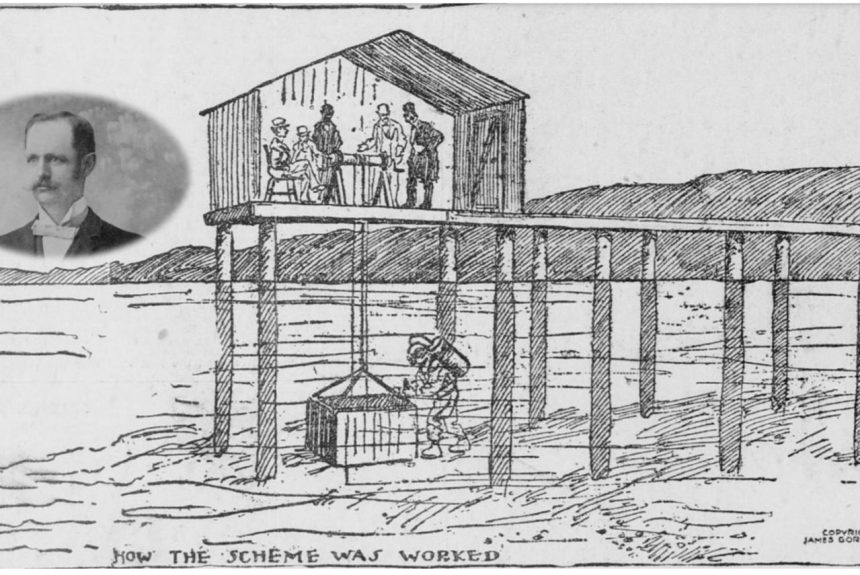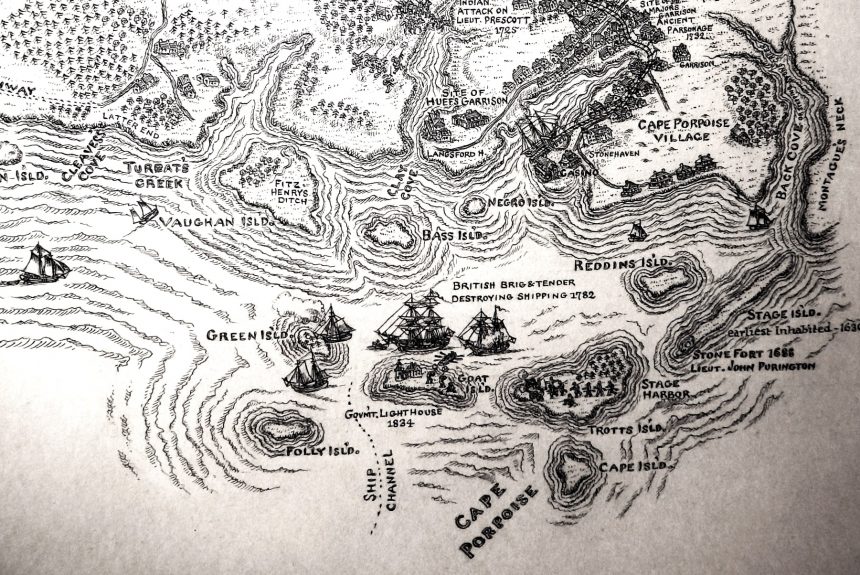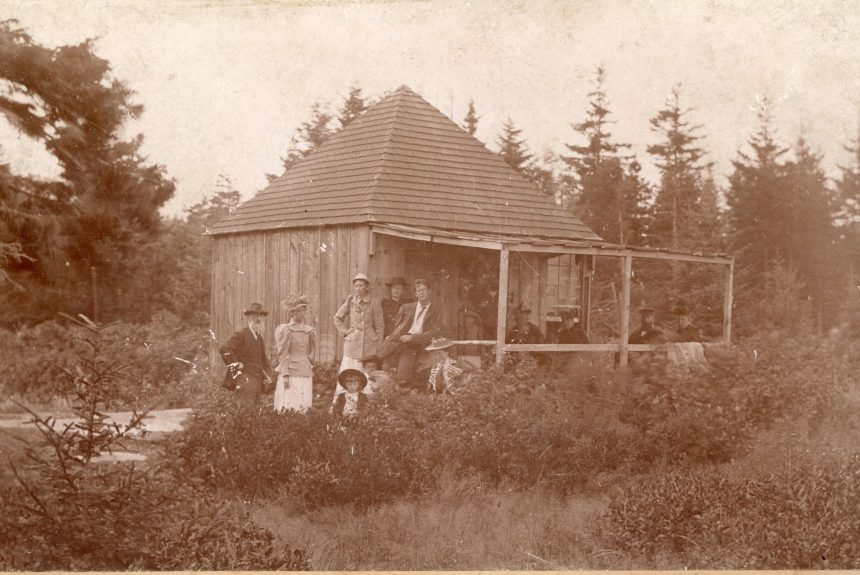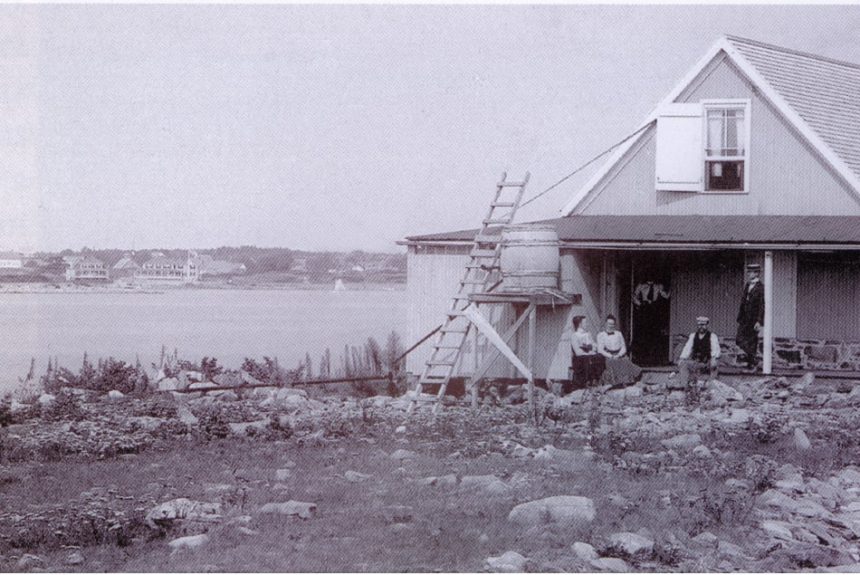Gold Prospecting in Cape Porpoise Harbor
Fort Island, connected at low water to Stage Island, has a rich and colorful history. Cape Porpoise settlers huddled behind the fort there during a 1689 attack. In 1894, Harvard student, Henry F. Knight described colonial artifacts he had collected on the island at a meeting of the Maine Historical Society. Melville Freeman, in his History of Cape Porpoise wrote “Fort Island was at one time the scene of considerable granite quarrying”. The Cape Porpoise Land Company purchased Fort Island on July 2, 1898. During the weeks that followed activities on the island were shrouded in secrecy.
The United States had suffered recession, high unemployment rates, and bank failures during the 1890s. Alaska’s Klondike Gold Rush offered a glimmer of financial hope to many American dreamers. Meanwhile, a Baptist minister in Middletown, CT had alienated his congregation by making Catholic-like noises from the pulpit and joined the ranks of the unemployed.
A solution to Reverend Prescott Jernegan’s financial woes came to him in a dream. He claimed to have envisioned a process by which gold could be extracted from seawater via some secret combination of electrical and chemical reaction.
Several deep-pocket capitalists were invited to accompany Jernegan to a little shack at the end of a deserted wharf near Providence, R. I. There he promised they would witness the first test of his mysterious “Accumulator”. The apparatus included a box containing a small amount of mercury. Two platinum wires ran under water from the box to a nearby wooded shore. In the presence of the capitalists the accumulator was lowered into the water through a trap door in the floor of the dark little hut where they all spent the night. At sunrise the box was examined and a jeweler in the party certified that the Accumulator indeed contained grains of real gold.
The capitalists drooled. Some of them begged Rev. Jernegan to let them invest in his invention. He accepted enough money to set up a full-scale operation in North Lubec, Maine. The Electrolytic Marine Salts Company was incorporated.
Some who witnessed Jernegan’s “miraculous demonstration” were also investors in the Cape Porpoise Land Company. Rather than purchasing shares of Jernegan’s Electrolytic Marine Salts Company they made plans to reproduce his apparatus on one of their newly purchased Cape Porpoise islands. They had installed a picnic cabin on Trotts Island so nobody was suspicious when the land speculators erected what looked from the outside like a “clubhouse” on Fort Island. Instead of the customary furnishings they filled the clubhouse with the most efficient water pumps money could buy. For a week they pumped Cape Porpoise Harbor seawater through their imitated gold-extracting apparatus. A blurb in the August 1898 issue of the Wave invited picnickers to enjoy the comfortably furnished cabin at Fort Island. Clearly, all gold prospecting had ceased.
That was just days after Rev. Jernegan, then manager of the North Lubec Gold Plant, had absconded to Europe with a large proportion of his stockholder’s money. An exposé of the Lubec scheme was soon published in the New York Herald by detective William Phelan, a disgruntled participant in the “miraculous demonstration” at Providence, R.I.
He revealed that Jernegan had enlisted the help of his childhood friend, Charles Fisher to hide at the nearby wooded shore in his diving suit until candles were lit inside the shack. With Phelan’s assistance, he had slipped into the water and using the platinum wires as his guide found the box deep under the wharf where the capitalists waited. He had added grains of gold to the mercury and returned to the wooded shore undetected.
A case could not be made for fraud since it was widely known that sea water actually does contain traces of gold. In The History of Cape Porpoise, Melville Freeman wrote that in Cape Porpoise, “It was found that gold could indeed be obtained in this manner but at a cost of about five dollars for every dollar’s worth of the precious metal”.






Leave a Reply